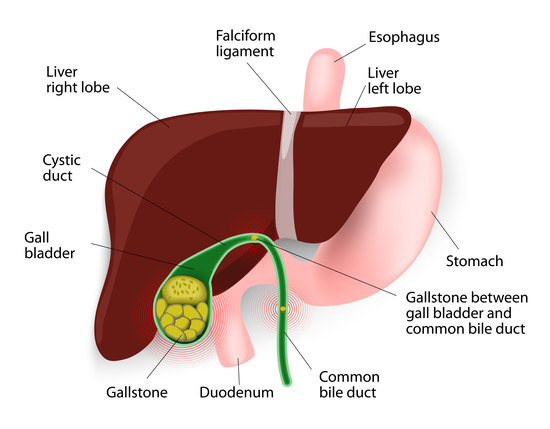
Welcome to Lahore Oncoplastic Breast Services, where we’re committed to providing top-notch care for a wide range of health concerns, including gallbladder issues. I’m Dr. Hammad Raza Sheikh, and today, I’d like to talk to you about an often-overlooked but crucial organ: the gallbladder.
You might think of your gallbladder as a bit player in the grand theater of your body, but this small, pear-shaped organ plays a vital role in your digestive health. Located just beneath your liver, the gallbladder stores and concentrates bile, a fluid that helps break down fats in your diet.
But why should you care about this tiny organ? Well, gallbladder problems are more common than you might think. In fact, studies show that in Pakistan, gallbladder diseases affect about 10-15% of the adult population, with women being more susceptible than men.
The good news is that gallbladder treatment has come a long way, especially here in Pakistan. We’re no longer limited to traditional open surgeries that require long hospital stays and recovery periods. Let’s look at some of the exciting developments in gallbladder care:
These new techniques aren’t just exciting from a medical standpoint – they’re making a real difference in the lives of Pakistani patients. Let’s look at some statistics:
– Success Rates: Laparoscopic cholecystectomy, now the gold standard for gallbladder removal, has a success rate of over 95% in Pakistan.
– Patient Demographics: While gallbladder issues can affect anyone, we’re seeing a higher prevalence in women aged 40-60, often related to factors like obesity and rapid weight loss.
– Common Conditions: The most frequent reason for gallbladder surgery in Pakistan is gallstones, accounting for about 80% of cases.
To truly appreciate how far we’ve come, let’s compare traditional open cholecystectomy with the newer laparoscopic approach:
– Large incision (10-15 cm)
– 3-5 days hospital stay
– 4-6 weeks recovery time
– Higher risk of complications
– 3-4 small incisions (each less than 1 cm)
– Often same-day discharge
– 1-2 weeks recovery time
– Lower risk of complications
The benefits for Pakistani patients are clear: less pain, faster recovery, and a quicker return to normal life.
I often hear concerns from patients about gallbladder surgery. Let’s address some common misconceptions:
Myth 1: “I can’t live without my gallbladder.”
Reality: While the gallbladder serves a purpose, you can live a normal, healthy life without it. Your liver will continue to produce bile, which will flow directly into your intestines.
Myth 2: “Gallbladder surgery is extremely risky.”
Reality: With modern techniques, gallbladder surgery is one of the safest and most common procedures performed worldwide.
Myth 3: “I’ll have to follow a strict diet for the rest of my life after surgery.”
Reality: Most patients can return to a normal diet within a few weeks after surgery, though it’s always best to maintain a balanced, healthy diet.
As a surgeon with over 15 years of experience, I’ve performed hundreds of gallbladder procedures. I’ve witnessed firsthand the transformation in patient outcomes as we’ve adopted newer, less invasive techniques.
One case that stands out is that of Amina, a 45-year-old mother of three who came to me with severe gallstone pain. She was hesitant about surgery, worried about the impact on her family and work. We performed a laparoscopic cholecystectomy, and Amina was able to return home the same day. Within a week, she was back to her normal routine, pain-free and grateful for the quick recovery.
Recovery from gallbladder surgery in Pakistan comes with its own unique considerations. Here’s what you can expect:
Looking ahead, I’m excited about the future of gallbladder treatment in Pakistan. We’re seeing increased adoption of minimally invasive techniques across the country, even in smaller cities and rural areas. There’s also growing interest in preventive care and early intervention, which could help reduce the need for surgery in some cases.
As we continue to invest in medical education and technology, I believe Pakistan will become a leader in gallbladder care, offering world-class treatment to patients across the region.
Common symptoms include pain in the upper right abdomen, especially after fatty meals, nausea, and indigestion. If you experience these symptoms, it’s best to consult a doctor for proper diagnosis.
In some cases, small gallstones may pass on their own or be managed with medication. However, larger stones or recurrent problems often require surgery for long-term relief.
A typical laparoscopic cholecystectomy takes about 30-60 minutes.
Most patients don’t need long-term medication after gallbladder removal. However, some may benefit from bile acid supplements to aid digestion.
While you can’t prevent all gallbladder issues, maintaining a healthy weight, eating a balanced diet, and staying hydrated can help reduce your risk.